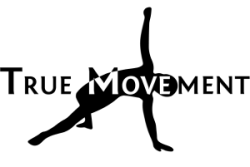Breaking Painful Habits
Sometimes you push too hard, don’t recover enough, stress piles up, and you start to hurt with certain activities. A lot of the time you don’t even know how these things happened, yet they linger over months or even years. These pesky things that we often mislabel “old injuries” can limit you from doing things that you enjoy and are good for you. You don’t have to give up those activities, you just need to find different ways to do them.
A Cautionary Note
When you have had a traumatic injury, pain that is increasing over time, or anything that seems like a cause for concern, get off the internet and see a qualified medical professional. Google doesn’t count as a medical professional.
Learning a Song
The first time you hear a song, you can only listen for what happens next. Give that song a few more listens and you’ll probably start following along. Over time it might take hearing just a few notes for you to finish the whole song by yourself. The ability to create these relationships is incredibly helpful for making predictions and decisions based on learned experiences so that you can navigate the world more easily.
Painful Movement as a Song
Imagine that one day you went for a run and “tweaked something” somewhere. You took a little time off and tried to ease back into things, but you started to experience some pain as you ran again. There are a tremendous amount of possibilities for why this might be the case, but a part of this might be that your body has learned to give a warning (as pain) about something that was dangerous in the past. The same way that just a few notes of a song can allow you to finish the whole thing, just enough similarities to the offending events can leave you hurting from something that isn’t really that dangerous.
Changing the Tune
By modifying your movements enough, you can often change the association between pain and those movements. At first this might mean doing things very differently to get your body moving again. There are countless variables and combinations to explore here: stride length, shoes, and surface in running, hand or foot position, speed of movement, path of movement, gaze, environment, implements, etc. In this phase especially I would encourage you to let yourself explore moving in ways that you normally don’t, even if that means that it looks “wrong” to you. Gradually you can reintroduce progressively more similar variations of the original activity until you are able to once again able to resume the original task.
An Example
Joe has experienced right shoulder pain in the bottom position of a barbell bench press for about a year. He started noticing some general shoulder pain one day after a particularly heavy workout, but this pain improved dramatically within the first week with some rest and has subsequently gone away except when in the bottom position of the barbell bench.
To start, Joe can try a variety of different movements that put his shoulder into a similar position, but under different conditions. Placing a hand on the wall and leaning or stepping his body into a wide variety of angles can help to explore these positions under minimal load. He can modify this movement by leaning more or less weight into his hand, actively trying to “pull” himself into the position with his back muscles, and using isometric holds anywhere along the way. As these exploratory positions get increasingly easier and more comfortable, they can be part of a warm up.
To progress, Joe can work on a wide range of push up variations, unilateral, alternating, or standard dumbbell bench presses with different grips and at different inclines or from the floor. Eventually he can start using variations of the barbell bench press, and likely the standard barbell bench press itself.
What Else is Going on?
After injuries and aggravating events, tissues in the area usually become sensitive to promote protection and healing. This is a normal and healthy process, and certainly not anything to be feared. Bodies are tremendously resilient and have great capacity to heal, but sometimes areas will remain sensitive even after healing is complete. New variations on movements may shift stress away from sensitive areas and increase your number of available movement strategies. Additionally, applying progressive loading to involved tissues can help facilitate healing and strengthen surrounding structures, which can potentially influence pain and function.
Closing Thoughts
Altering movement is a cornerstone of many therapies, all of which have their own (often conflicting) theoretical ideas. Because pain and specific movements are often tightly linked together, it is reasonable to think that introducing novelty to break that link is one of the key factors in explaining why so many different approaches can yield such similar results. In finding this commonality, we discover a broader framework that allows us all more freedom to independently explore a wide variety of new movements without fear.
References:
Beyond nociception: the imprecision hypothesis of chronic pain
Exercise therapy for chronic musculoskeletal pain: Innovation by altering pain memories
Bogus visual feedback alters onset of movement-evoked pain in people with neck pain


